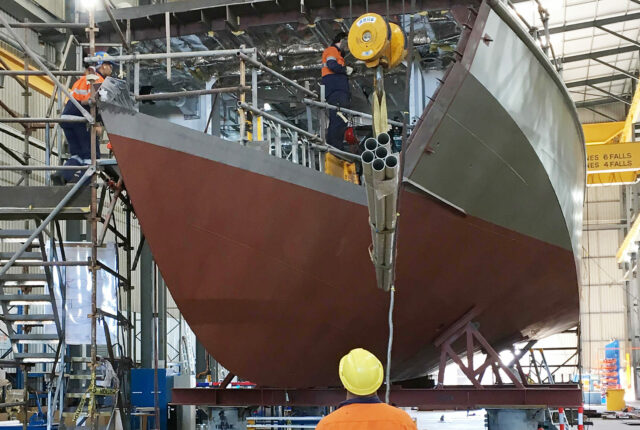
Shipping Containers Keep Growing in Size
An estimated 90% of the world’s goods are transported via sea freight services, with 60% of that – including virtually all your imported fruits, gadgets and appliances – the need for larger shipping containers keep growing. The rest is mainly commodities like oil or grains that are poured directly into the hull. In total, about $14 trillion of the world’s goods spend some time inside a big metal box. In other words, there is a lot of money in transferring cargo from A to B. This was emphasised when approx. $9.6 billion a day was being lost due to 369 ships stuck waiting to pass through the canal.
Today, the standard container size is 20 feet long, the same width, but more commonly half a foot taller – a size that’s become known as a “20-foot-equivalent container unit,” or TEU. There are actually a few different “standard” sizes, such as 40 feet long or a little taller, though they all have the same width. One of the key advantages is that whatever size a ship uses, they all, like Lego blocks, fit neatly together with virtually no empty spaces. This innovation made the modern globalized world possible. The quantity of goods carried by containers soared from 102 million metric tons in 1980 to about 1.83 billion metric tons as of 2017.
David Aherne, Director of Across the Ocean Shipping, believes that bigger container ships would benefit his business. He states, “if you sit down and think about it… the more containers packed on a ship, the more a shipping company can earn on each journey so hopefully economies of scale mean lower freight rates for our clients. Also, it’s time to think more about the environment as a well-loaded 20,000+-TEU vessel achieves the lowest fuel consumption per TEU, while using more smaller ships to deal with inadequate hinterland infrastructure would increase greenhouse gas emissions per nautical mile”.
Ships capable of carrying loads 50% larger than the Ever Given’s may be plying the open seas by 2030. The standardized shipping container remains more popular and more in demand than ever.






